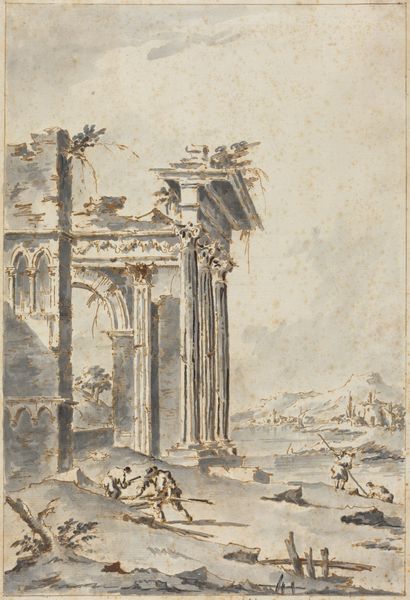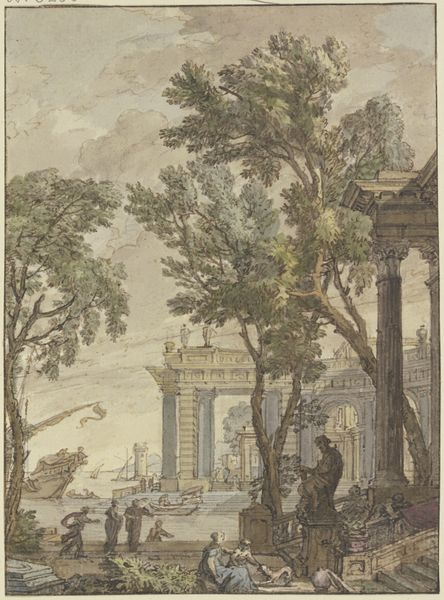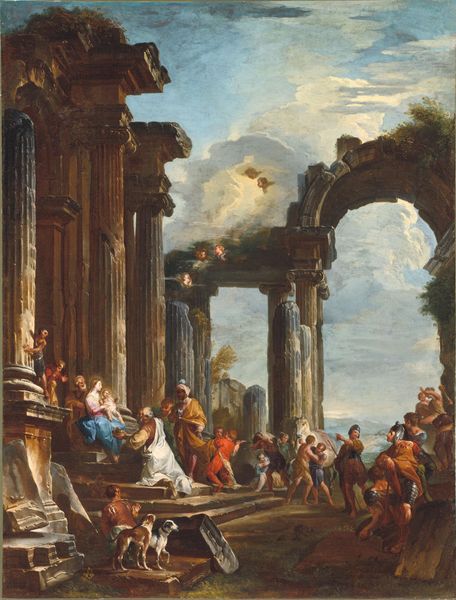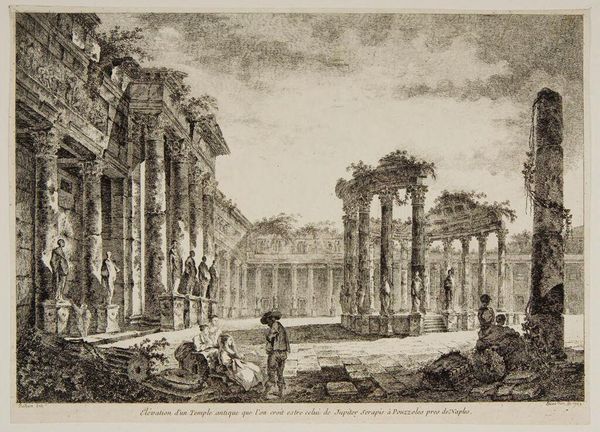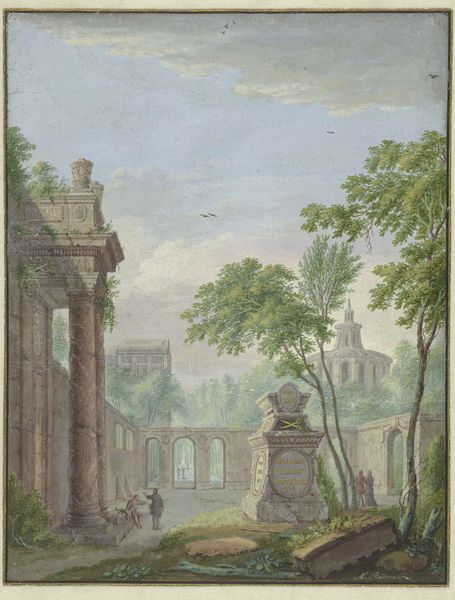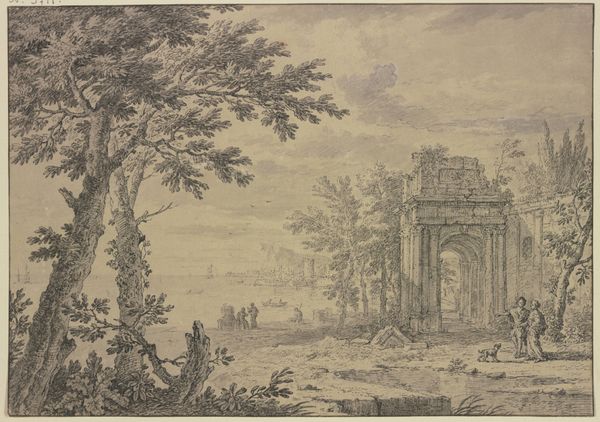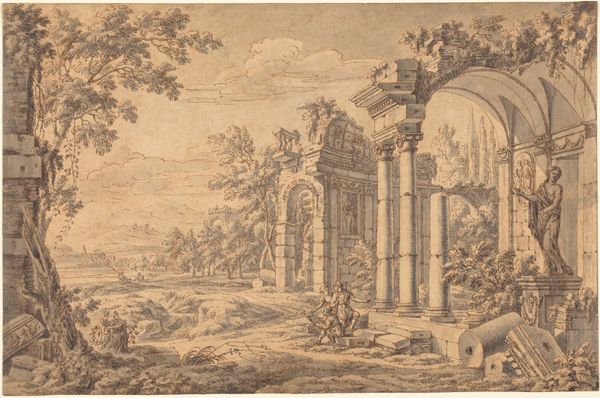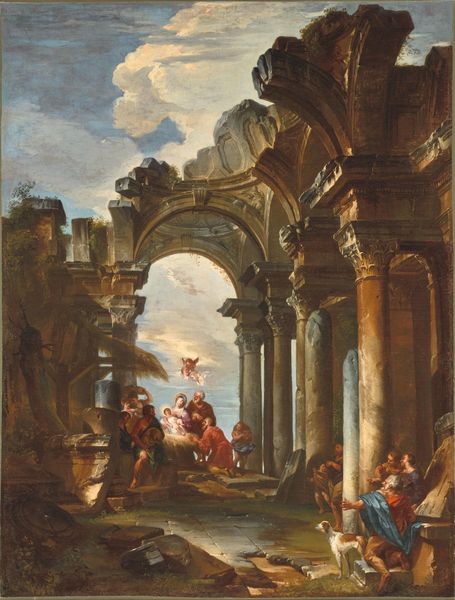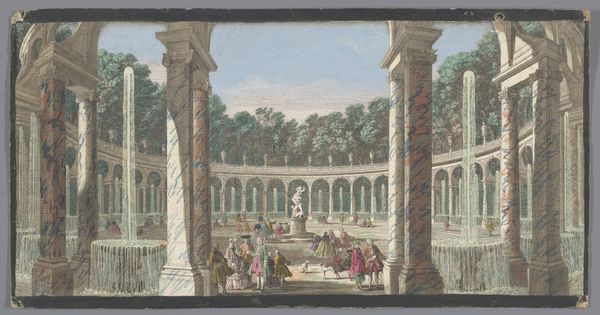
drawing, painting, architecture
#
drawing
#
painting
#
landscape
#
classicism
#
15_18th-century
#
cityscape
#
architecture
Copyright: Public Domain
Curator: This painting, titled "Römische Ruinen, links ein Brunnen, mit Staffage," which translates to Roman Ruins, with a fountain on the left and figures, was created in 1789 by Jean François Gout. It resides here at the Städel Museum. Editor: My initial response is one of serene contemplation, a scene steeped in graceful melancholy. The delicate light and soft palette create an almost dreamlike state, despite the rather concrete subject matter of architecture. Curator: Indeed. The artist's embrace of classicism manifests in the measured arrangement of the architectural ruins. Note the columns, arches, and deliberate placement of the fountain. They all seem to speak to an age of reason and order. How do you interpret the ruinous aspect of the buildings? Editor: The ruins underscore a romantic engagement with time and history, quite common for the era. These remnants serve as visible symbols of mortality and the ephemeral nature of human endeavors. They romanticize decline. But I see a statement too about how such historic spaces become a new 'stage' of civic and public life through these staffage figures in the foreground. Curator: A potent interpretation. It's hard to not analyze the composition. It is certainly an idealized depiction, presenting a carefully constructed vision rather than an accurate historical record. It's meticulously painted, note the careful gradients in tone, and the delicate work in creating a believable perspective. Editor: Looking closer at the people populating the work is really interesting. They feel almost like they're from a completely different era or story as compared to the ruins. The scene has them as the main actors in how such ancient places might endure through daily life and culture. Curator: So, do we see Gout idealizing the endurance of cultural life against a grand scale of changing human and architectural time? Editor: Yes, these ruins also become locations of a cultural past constantly living on into the future. It all combines for me, through these gentle shades and deliberate formal gestures, to evoke contemplation around permanence. Curator: Yes, that reading harmonizes well with my understanding of Gout’s structural approach, giving his paintings such formal poise. Thank you for this discussion! Editor: The pleasure was mine. This piece offers so much on socio-political interpretations, how ancient art shapes civic experiences.
Comments
No comments
Be the first to comment and join the conversation on the ultimate creative platform.


